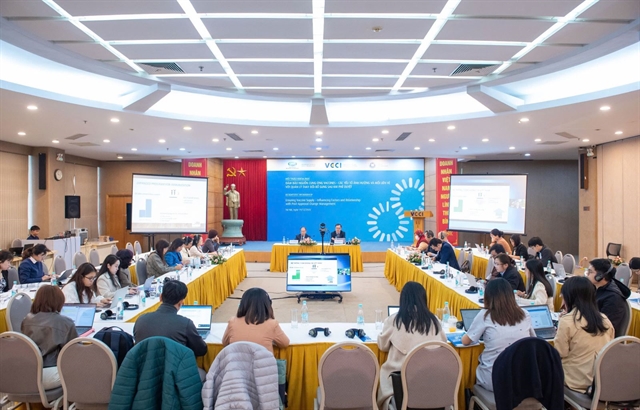 Society
Society

 |
| NA Chairman Trần Thanh Mẫn (middle) speaks at the session. VNA/VNS Photo |
HÀ NỘI — The National Assembly (NA) Standing Committee on Monday continued its 42rd session by reviewing the Government's proposal to adjust Việt Nam’s 2025 economic growth target to at least 8 per cent, aiming to accelerate national development and establish a strong foundation for sustained double-digit growth from 2026 onward.
According to the Government's proposal, 2025 is an important year marking the final stage of the 2021-2025 socio-economic development plan, a year of accelerated growth and preparations for the 14th National Party Congress to advance to a new era. The Government aims to complete unfinished targets for the 2021-2025 period while enhancing the quality and efficiency of those already achieved.
Therefore, an 8 per cent or higher growth rate is necessary to ensure fast yet sustainable growth, along with efforts to maintain macroeconomic stability, control inflation, and balance key economic factors, as well as harmony among economic growth, social development, environmental protection, along with national defence and security.
The Government sets goals of achieving industry and construction's expansion of 9.5 per cent or higher (with manufacturing and processing at 9.7 per cent or higher), the service sector development of 8.1 per cent or higher, and growth of agro-forestry-fisheries of at least 3.9 per cent. These sectors must outpace 2024 growth by 0.7 per cent to 1.3 per cent, with industry - construction, especially manufacturing and processing, remaining the primary growth driver.
For 2025, Việt Nam’s GDP is targeted at over US$500 billion, with GDP per capita surpassing $5,000. The Consumer Price Index (CPI) is expected to rise by 4.5 per cent to 5 per cent annually.
Chairman of the NA's Economic Committee Vũ Hồng Thanh, who represented the verification agency, said that the committee largely supports the proposed GDP growth target and economic scenario. He emphasised that the Government's commitment to higher growth reflects its determination to fulfil Việt Nam’s 2021-2025 development goals, achieve double-digit growth in the long term and lay the groundwork for a new era of development and prosperity.
However, Thanh noted that economic indicators at the beginning of 2025 remain sluggish. The Index of Industrial Production (IIP) in January 2025 rose only 0.6 per cent year-on-year, while the Purchasing Managers’ Index (PMI) remained below 50 points for two consecutive months, signalling shrinking business conditions in manufacturing.
Given these concerns, the verification agency urged the Government to conduct a thorough feasibility assessment of the GDP target. It stressed the need for strong financial security measures and sustainable public debt management. Some members also called for a reassessment of the labour productivity growth target, given its close correlation with GDP expansion.
Regarding the targeted 4.5 per cent to 5 per cent CPI increase, the committee acknowledged the need for adjusting this target to enable greater flexibility in fiscal and monetary policies to support growth. However, inflation remains a critical factor impacting macroeconomic stability, living costs, and business expenses, it said, asking the Government to implement effective inflation control measures in line with growth objectives.
Lê Quang Tùng, NA General Secretary and head of the NA Office, warned that time is running out to implement the necessary measures to achieve 8 per cent GDP growth in 2025. He called for decisive and immediate action, prioritising solutions with instant economic impact. In addition to stimulating growth in key economic hubs, he emphasised the need to remove obstacles for businesses to unlock economic potential.
NA Vice Chairman Trần Quang Phương stressed the importance of legal reforms, urging a review of legal bottlenecks and the amendment or introduction of new laws where necessary. He cited the Law on Forestry as an example, noting that delays in revising the law may hindered land planning, conservation efforts, and forest management.
Following discussions, the NA Standing Committee agreed to present the Government's proposal to the NA for consideration at the parliament's 9th extraordinary session. — VNS




